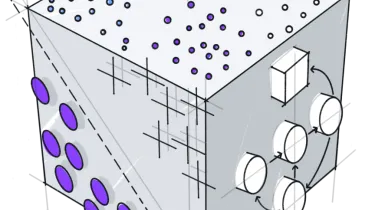Einführung in das Maschinelle Lernen Teil 3: Bewertung und Optimierung
Der dritte Teil des Kurses Einführung in das Maschinelle Lernen

📊︎
Fortgeschrittene
⏱
40 Stunden
🏅︎
Leistungsnachweis
🎁︎
Kostenlos
★
4 (3)
©
CC BY-SA 4.0
🌐︎
Englisch
Dieser Kurs gehört zu der Kursreihe
Einführung in das Maschinelle Lernen
Überblick
Maschinelles Lernen (ML) steht im Zentrum vieler Anwendungen der künstlichen Intelligenz. Ein zentrales Ziel dieser Kursreihe ist es, die grundlegenden Bausteine hinter dem überwachten ML zu vermitteln. In diesem dritten (und letzten) Teil werden wir die Bewertung und das Tuning von ML-Modellen eingehend behandeln. Neben dem Verständnis der theoretischen Grundlagen lernen die Teilnehmenden, wie verschiedene ML-Algorithmen in R und Python mit Schwerpunkt auf tabellarischen Daten angewendet und bewertet werden können.
Welche Themen werden behandelt?
- Bewertung von Klassifikationsmodellen, z. B. anhand von ROC-Kennzahlen und AUC
- Bewertung von Regressionsmodellen
- Hyperparameter-Tuning
- Verschachteltes Resampling
Was werde ich erreichen?
- Erkläre, wie ein Klassifikationsmodell mit ROC-Metriken und der AUC bewertet werden kann
- Erkläre die Unterschiede zwischen Resampling-Strategien wie Kreuzvalidierung und Bootstrap
- Erkläre die Bedeutung der Hyperparameter-Optimierung und kenne die grundlegenden Algorithmen dafür
- Erkläre die Konzepte von Overfitting und Overtuning
Welche Voraussetzungen muss ich erfüllen?
Dieser Kurs steht allen Interessierten offen. Wir empfehlen den Teilnehmenden jedoch folgende Voraussetzungen:
- Eine solide Grundlage in Mathematik, zum Beispiel 8 Jahre Mathematikunterricht in der weiterführenden Schule
- Vorkenntnisse in Linearer Algebra und Analysis erforderlich (mindestens Abiturniveau)
- Vorkenntnisse in Statistik und Wahrscheinlichkeitsrechnung sind empfohlen (mindestens Abiturniveau)
- Grundlegende Programmierkenntnisse in R oder Python (z. B. durch einen kurzen Selbstlernkurs)
- Sie haben die folgenden Kurse abgeschlossen: Einführung in Maschinelles Lernen Teil 1 & Einführung in Maschinelles Lernen Teil 2












